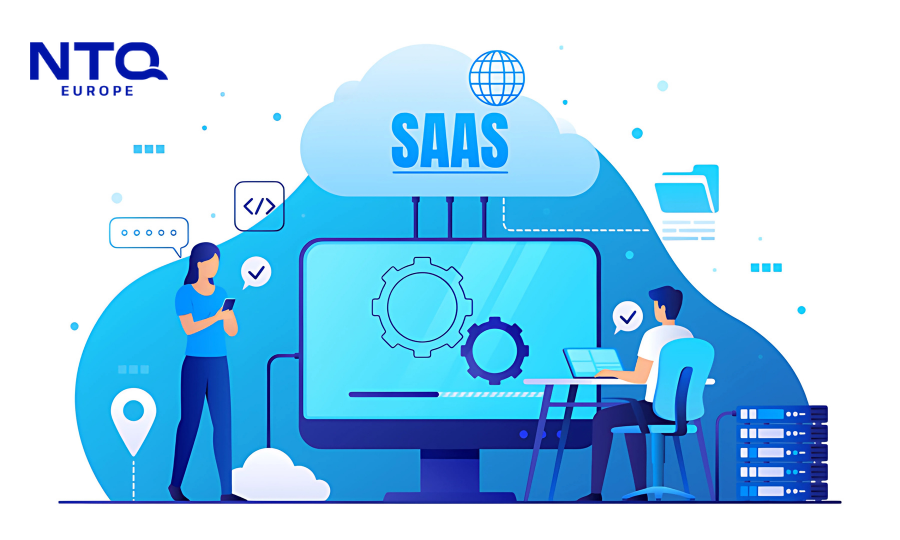1. Introduction to Cloud Cost Optimization
As businesses run, scale, and secure cloud infrastructure, managing cloud expenses efficiently has become a top concern.
Cloud Cost Optimization is a strategy that helps businesses monitor resource usage, minimize waste, and maximize return on investment (ROI).
This article will introduce the concept, benefits, and methods of optimizing cloud costs in a systematic and practical way.
What is Cloud Cost Optimization?
Cloud cost optimization involves the management and minimization of expenses associated with cloud computing services, while ensuring maximum performance, reliability, and scalability. It’s about aligning your cloud resources with actual needs, so you’re not paying for idle virtual machines, oversized databases, or unnecessary storage.
In other words, it’s a combination of best practices, smart tools, and strategic decision-making that enables organizations to make the most out of every euro they invest in cloud infrastructure.
Why Is Managing Cloud Costs Crucial?
Cloud services, especially from hyperscalers like AWS, Microsoft Azure, and Google Cloud, often come with complex pricing models.
Unoptimized cloud environments lead to:
- Wasted resources
- Budget overruns
- Inefficient operations
- Inaccurate financial forecasting
European businesses, especially those undergoing digital transformation, must integrate low-cost cloud management practices into their IT governance to ensure cost transparency, improve ROI, and scale confidently.

Common Pitfalls That Lead to Cloud Waste
Several common missteps lead to excessive cloud spending:
- Leaving unused resources (such as dev/test environments) running
- 24/7Choosing higher-tier services than necessary
- Ignoring pricing models (e.g., forgetting about Reserved Instances or Spot Instances)
- Lack of visibility across multi cloud environments
- Not leveraging automation or alerts for idle resource detection
The key is not just about cutting costs, but spending smarter.
2. Key Challenges in Cloud Cost Management
Although cloud computing offers numerous outstanding benefits, such as flexible scalability, rapid deployment, and optimized performance, cloud cost management remains a complex problem for many businesses. In fact, many organizations have fallen into a state of overspending due to a lack of transparency in resource usage, unreasonable cost allocation, or ineffective monitoring strategies.
Lack of Cost Transparency
According to KPMG’s report, businesses spend 35 percent more on cloud resources than needed to meet their objectives. Without a clear understanding of cloud usage and spending, it is difficult for businesses to allocate budgets effectively or identify unnecessary expenses.
Unused or Underutilized Resources
It’s common for companies to leave behind resources that were used for short-term projects or testing. These dormant instances continue to accrue costs, becoming silent budget killers.
According to recent studies, about 30% of cloud spend is wasted due to unused or idle resources.
Balancing Performance and Cost
Balancing performance and cost is crucial for organizations to leverage technology and drive business outcomes. Overspending on performance can threaten financial health. Achieving balance requires strategic decision-making and performance monitoring.
Complex Pricing Models
Each cloud provider has its own pricing structure, which includes various service tiers, billing methods, and region-based cost differences. AWS cloud cost optimization, for example, requires understanding EC2 pricing types, storage classes, data transfer fees, and more — which can quickly overwhelm finance and IT teams alike.
Lack of Automation and Monitoring
Relying on manual methods to manage cloud resources is error-prone and time-consuming, resulting in unexpected costs.
Additionally, it is challenging for businesses to gain a comprehensive understanding of their spending if they lack real-time monitoring of resource utilization and costs.
3. Cloud Cost Optimization Strategies
Here are some cloud cost optimization best practices that organizations across Europe are adopting to manage and reduce their cloud spend:
Smart Resource Management
Conduct regular audits to remove unused virtual machines, storage volumes, or orphaned snapshots. Right-size underutilized resources by adjusting configurations to match actual performance needs.
A simple example: If an application runs comfortably on a t3.medium instance, there’s no need to use a more expensive t3.large instance.
Leverage Flexible Pricing Models
Cloud providers offer dynamic pricing models:
- Reserved Instances: Pre-commit to usage for 1 or 3 years for significant savings.
- Spot Instances: Buy spare compute capacity at a fraction of the cost.
- Pay-as-you-go: Scale elastically without upfront commitment.
Each model serves different workloads. A hybrid approach that mixes them based on workload criticality and usage patterns often yields the best results.
Automate Downtime for Non-Critical Resources
Not all workloads need 24/7 uptime. Development, staging, or QA environments can be scheduled to shut down after business hours or over the weekend. Automation tools can help schedule start/stop operations, drastically cutting costs.
This technique alone can cut certain operational costs by 40–60%.
Cloud Architecture Optimization
Design cloud-native applications with cost-efficiency in mind. Use managed services (like AWS Lambda or Azure Functions) to eliminate server overhead. Employ content delivery networks (CDNs) to reduce data transfer costs.
Choosing the right services — instead of just “lifting and shifting” legacy applications — is fundamental to long-term savings.
Use Monitoring & Reporting Tools
Leverage native tools like:
- AWS Cost Explorer
- Azure Cost Management
- Google Cloud Billing Reports
These platforms help monitor spending patterns, set budgets, and alert when usage exceeds thresholds. More advanced third-party solutions provide unified views across multi cloud cost optimization scenarios.
Periodic Cost Reviews and Optimization Cycles
Cost optimization is not a one-time event. It should be embedded into operational workflows by conducting monthly or quarterly reviews to identify inefficiencies, track progress, re-allocate resources and forecast future expenses.
4. Benefits of Cloud Cost Optimization
Enterprises that invest in structured cloud cost optimization strategies don’t just save money — they transform how IT and finance collaborate to drive business value.
Reduced Operational Costs
By eliminating waste and right-sizing infrastructure, companies significantly reduce their monthly cloud bills. Instead of reacting to high expenses, they proactively control and predict costs — especially across large-scale or multi cloud environments.
For example, a company running on AWS could lower EC2 costs by 40% using Reserved Instances and Spot Instances strategically. This isn’t just aws cloud cost optimization — it’s a smarter way of thinking about infrastructure spending.
Enhanced System Performance
Cloud optimization provides faster access to data, improves responsiveness and reduces data transfer latency during peak loads. This fine-tuning enhances application speed, user experience, and system uptime.
Improved IT Financial Management
An effective cloud cost optimzation strategy allows monitoring cloud usage, detecting anomalies, and forecasting budgets.
Businesses gain better budget visibility and can track each department’s cloud consumption against KPIs — reducing friction and improving accountability.
Increased Return on Investment (ROI)
Cloud cost optimization services provide an effective way to maximize ROI by ensuring that cloud environments are optimized, secure, and cost-efficient. Whether it’s customer-facing applications or backend services, optimized environments yield higher ROI through efficiency, resilience, and speed.
Intelligent Automation & AI Integration
Cloud cost optimization services often integrate AI and machine learning capabilities to predict future usage patterns, recommend architecture changes while automatically reallocating resources in real time.
This level of intelligent automation takes cost control beyond human monitoring, ensuring faster reactions and smarter decisions.
5. How to Choose the Right Cloud Cost Optimization Partner
You should consider the key criteria when evaluating a potential cost optimization partner to accompany your business during the cloud migration journey.

What to Look for in a Cloud Optimization Partner
When evaluating cloud cost optimization companies, consider:
- Experience in handling various cloud platforms (AWS, Azure, Google Cloud)
- Toolset and automation capabilities for real-time cost monitoring
- Security and compliance expertise (especially for industries with strict regulations)
- Transparent processes for cost reviews and reporting
- Consulting services to support both strategic and technical needs
Evaluating Cloud Cost Automation Solutions
Choose automation tools that:
- Provide visibility across multi cloud cost optimization
- Offer detailed reports and customizable alerts
- Integrate with DevOps pipelines for continuous cost control
- Support AI/ML-based recommendations and anomaly detection
Some of the best cloud cost optimization tools in the market include:
- AWS Cost Explorer (native)
- Azure Cost Management + Power BI
- Google Cloud Billing with BigQuery
- Apptio Cloudability
- CloudHealth by VMware
- Spot.io (now part of NetApp)
Each tool has its strengths — your partner should help select and implement the one that fits your architecture and growth model.
Why Work With a Specialized Cloud Service Provider?
Partnering with a cloud optimization expert ensures:
- Faster implementation of cost-saving practices
- Seamless integration of AI-driven tools
- On-demand expertise for architecture reviews
- Dedicated support for ongoing cost governance
This becomes even more valuable for mid-to-large enterprises managing hybrid and multi cloud architectures or looking to scale operations across multiple regions.
6. Cloud Cost Optimization Services by NTQ Europe
At NTQ Europe, we recognize that cloud spending is not just an IT concern — it’s a critical financial strategy. That’s why we deliver comprehensive cloud cost optimization services designed for enterprises navigating digital transformation across Europe.

Strategic Cloud Spend Analysis
We assess your current cloud architecture, usage trends, and billing data. Using AI-powered tools, we identify opportunities to cut unnecessary spending, right-size workloads, and redesign inefficient infrastructure components.
Real-Time Cost Control & Forecasting
We integrate intelligent platforms that continuously monitor your cloud usage. This allows your teams to receive alerts, track performance, and generate forecasts — helping you stay ahead of budget overruns and unexpected spikes.
AI-Driven Optimization Recommendations
We use advanced algorithms to provide tailored suggestions, such as:
- Shutting down unused resources
- Converting pay-as-you-go workloads into Reserved Instances
- Migrating workloads to lower-cost services or regions
Our automated platform handles repetitive tasks, saving time and reducing human error — a modern take on low cost cloud management.
Implementation & Continuous Support
Whether you’re running on AWS, Azure, Google Cloud, or a multi cloud setup, our team helps you:
- Implement cloud cost governance frameworks
- Train your teams on cloud cost optimization best practices
- Conduct regular architecture reviews and spending assessments
We work as an extension of your internal team — not just to optimize costs today but to keep them optimized tomorrow.
7. Conclusion
By gaining visibility into your cloud usage, eliminating waste, and aligning spending with business priorities, businesses can successfully optimize cloud costs without compromising performance.
Cloud cost optimization strategy allows businesses to reduce waste, improve system performance and reliability, build accurate financial forecasts, and increase ROI from cloud investments while empowering teams with automation and actionable insights
However, successful optimization goes beyond one-time cost-cutting — it requires continuous governance, smart automation, and the right expertise.
As a trusted IT service provider, NTQ Europe helps businesses across Europe get more value from their cloud investment. Whether you’re migrating legacy systems or fine-tuning multi-cloud operations, our teams provide the tools, processes, and monitoring you need to stay in control.



















